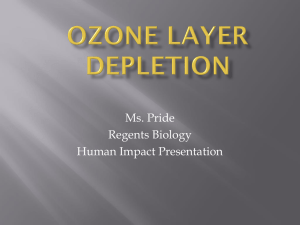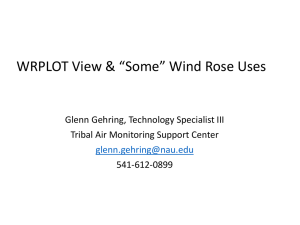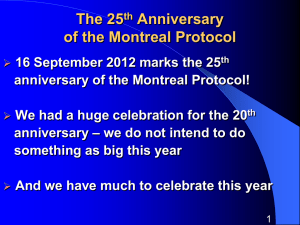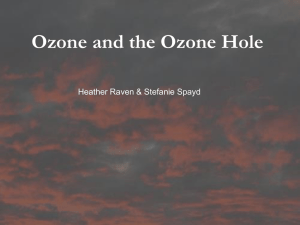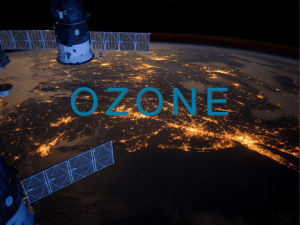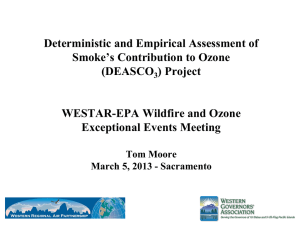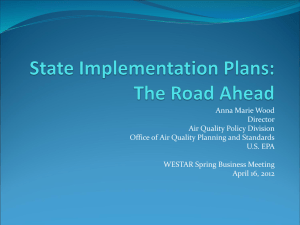Air quality issues of concern to the American Petroleum Institute
advertisement
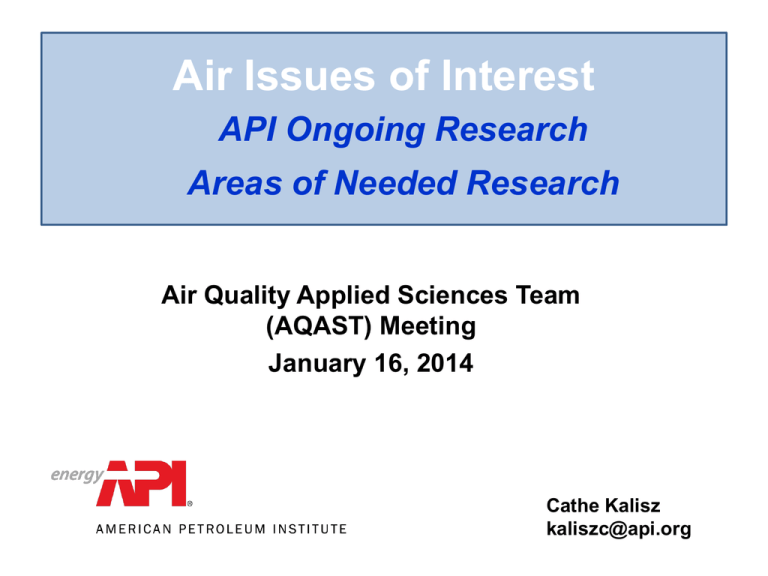
Air Issues of Interest API Ongoing Research Areas of Needed Research Air Quality Applied Sciences Team (AQAST) Meeting January 16, 2014 Cathe Kalisz kaliszc@api.org11 About the American Petroleum Institute A national trade association that represents all segments of America’s oil and natural gas industry with more than 550 members Members are large, integrated companies; exploration and production, refining, marketing, pipeline, and marine businesses; and service and supply firms Key functions include advocacy, research, development/publication of industry standards, and certification and training programs The Regulatory and Scientific Affairs Department conducts research addressing health and environmental issues in air (including greenhouse gases), water and solid waste 2 API Ongoing or Planned Air Research Improving PM2.5 Emissions Estimates (Air Control Techniques, Inc.) PM2.5 “Wet” Test Method OBJECTIVE: Design a relatively simple method, using mostly equipment stack testers will have available, for measuring PM2.5 filterable particulate in watersaturated exhaust streams. BACKGROUND: Currently there is no EPA regulatory test method for measuring PM2.5 filterable particulate in saturated exhaust streams. Sources with wet scrubbers must use EPA Method 5 for total filterable particulates, which can have a high bias. STATUS: A Method Development Report, Method 301 Test Program Report, and Draft Test Method were submitted to EPA on 9/23/13. API has requested that EPA establish the new wet method as an “Other Test Method” (OTM) for use by the testing community. 4 Improving Ozone Measurement • Monitoring network O3 photometers can have up to 60 ppb bias, drift up to 20 ppb daily, and have up to a 10 ppb limit of detection (FEM Specifications; 2013 O3 ISA, Section 3.5.3). • Current ozone photometers are subject to interference (Spicer et al. 2010) by humidity, mercury vapor, and substituted arenes (e.g., aldehydes, phenols, styrenes, naphthalenes, nitro-aromatics). Monitor Accuracy Matters Monitored attainment and exposure may change Current air quality models evaluated against monitoring data may perform better or worse than we think Modeled population exposure, dose, and risk may change 5 Improving Ozone Measurement (SpiceAir Consulting; URS; Battelle; TRJ Environmental) API ozone monitor testing in Houston, TX and Durham, NC suggests two new ozone monitors are virtually ”interference free” with ozone measurements lower than those recorded by conventional photometers, Durham study used instruments particularly during peak ozone mounted in rolling luggage cart days. (Ollison et al. 2013 JAWMA 63: 855-863; Johnson et al. 2014 JAWMA (in press)). New drop-in gas-phase ozone scrubbers provide an inexpensive upgrade of most ozone photometers to “interference free” monitors http://www.twobtech.com/model_GPT.htm. 6 Estimating Ozone Response to US Anthropogenic Emission Reductions Using CAMx HDDM Sensitivity (ENVIRON International; Earth Systems Sciences) OBJECTIVE: • Use the CAMx High-order Decoupled Direct Method (HDDM) to assess reductions in NOx and VOC precursor emissions needed to meet alternate ozone NAAQS levels BACKGROUND: • EPA has previously considered lowering the ozone NAAQS to a level between 60-75 ppb. • Used 2006 US-wide modeling dataset at 12km resolution with GEOS-Chem boundary conditions. Selected 4 cities where modeled and monitor values corresponded well (Los Angeles; St. Louis; Philadelphia; Sacramento) for more in-depth analysis. STATUS: • Analyses completed. For select cities, deep precursor cuts (>50%) are needed to achieve 60 - 75 ppb, and net exposure is relatively non‐responsive to changes in precursor emissions. • Additional analyses with more recent year emissions data are planned. 7 Estimating Ozone Response to US Anthropogenic Emission Reductions Using CAMx HDDM Sensitivity % reduction in 2006 NOx and VOC emissions Projected emission reductions relative to 2006 necessary to achieve a 4th highest MDA8 between 60 and 75 ppb. 100% 90% 80% 70% 4th highest MDA8 60% 60 ppb 65 ppb 50% 70 ppb 40% 75 ppb 30% 20% 10% 0% Los Angeles, CA Sacramento, CA St. Louis, MO Philadelphia, PA 8 CAMx HDDM Projected Changes – St. Louis Sites “NOx-rich” site (high frequency of hours with high NOx and low ozone levels) High ozone site (higher frequency of hours with high ozone) Tails of hourly frequency distributions shift toward mid‐range (background ozone) Up to ~ 75% reduction, annual integrated hourly O3 (ppb-hours) increases as emissions are reduced at the NOx-rich site. 9 Assessing “Background” Contributions to Total Ozone Using CAMx Source Apportionment (ENVIRON International) OBJECTIVE: • Use the CAMx Ozone Source Apportionment Tool (OSAT) to assess “background” contributions to ozone at rural and urban sites throughout the U.S. BACKGROUND: • Some areas in the country may be at or approaching background levels of ozone. • Examined 7 rural sites and 16 cities. STATUS: • Analyses completed. Some results on following slides. 10 Modeled contributions from global background (tropospheric and stratospheric O3), natural (Natr O3), and US anthropogenic (Anth O3) sources to total O3 11 Modeled contributions from global background (tropospheric and stratospheric O3), natural (Natr O3), and US anthropogenic (Anth O3) sources to total O3 12 Improving GHG Emissions Estimates for Oil and Gas Operations (URS; The Levon Group; Others) Two years of emissions data (2011 and 2012) reported to EPA’s Greenhouse Gas Reporting Program (GHGRP) facilitates focus on highest impact source categories in the oil and gas sector Ongoing/Planned Projects to Improve Emissions Estimates: 1.Equipment Leaks Data Assessment and Derivation of Updated Emission Factors 2.Flare Efficiency Data Assessment and Development of Guidance 3.Pneumatics Controllers Venting Rate Testing and Classification 4.Develop empirical equations to predict the total gas produced during flow back with hydraulic fracturing 13 Research Areas of Interest with Potential for AQAST or Other Government or Academic Collaborations NAAQS Air Quality Issues Background Ozone and Ozone Source Apportionment – Contribution of stratospheric ozone – Long range (hemispheric) transport of ozone – Wildfire ozone impacts – Lightning ozone impacts 15 NAAQS Air Quality Issues NAAQS Exceptional Events - Identifying exceptional events impacting local and regional air quality, such as stratospheric intrusions (ozone) and forest fires (ozone and particulate matter) - Satellite and modeling data (for example, NASA MODIS satellite data and NRL aerosol modeling data) have been useful in identifying exceptional events Example data used to help identify an ozone exceptional event in Houston 16 NAAQS Air Quality Issues Models Used for Air Permitting Assessment of NO2 Impacts Developing more robust and efficient models for assessing NO2 impacts of new or modified emission sources Assessment of PM2.5 Impacts Developing practical methods to assess impacts of primary and secondary PM2.5 17 NAAQS Air Quality Issues Air Quality Monitor Instrumentation – Pair existing monitors with newer equipment to identify/quantify interferences and generate more accurate ambient measurements for NAAQS compliance and model verification 18 Oil and Gas Emissions Issues Emissions Variability – Quantify temporal variability inherent in oil and gas operations – Consider facility type, pad-wide and basin-wide variability – Estimate sampling frequency and duration necessary to constrain sources at different spatial scales (i.e. mobile lab vs. aircraft). Satellites might be very useful here because of uniform sampling over long periods. Inventory Validation - Compare estimates from inventories to other estimates of oil and gas emissions Inverse Model Evaluation – Evaluate inverse models being used in “top down” oil and gas emission studies – Quantify model uncertainty to help better evaluate differences between “bottom up” and “top down” inventories 19




